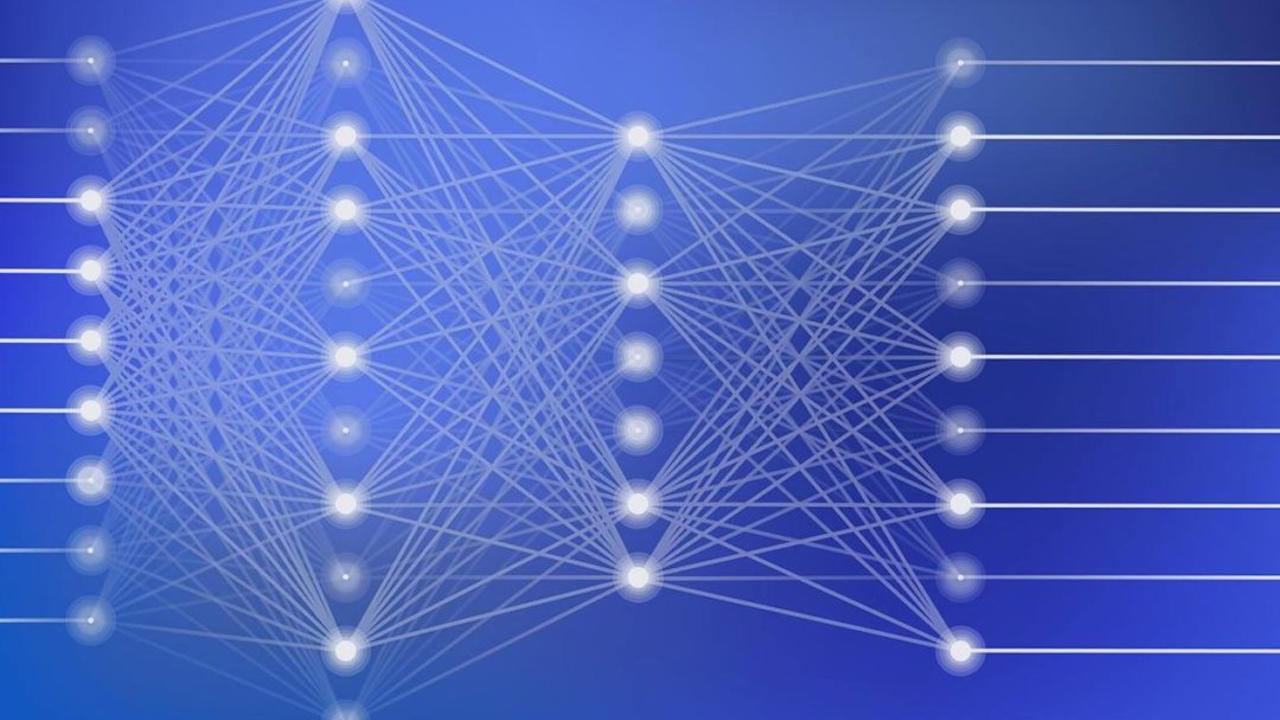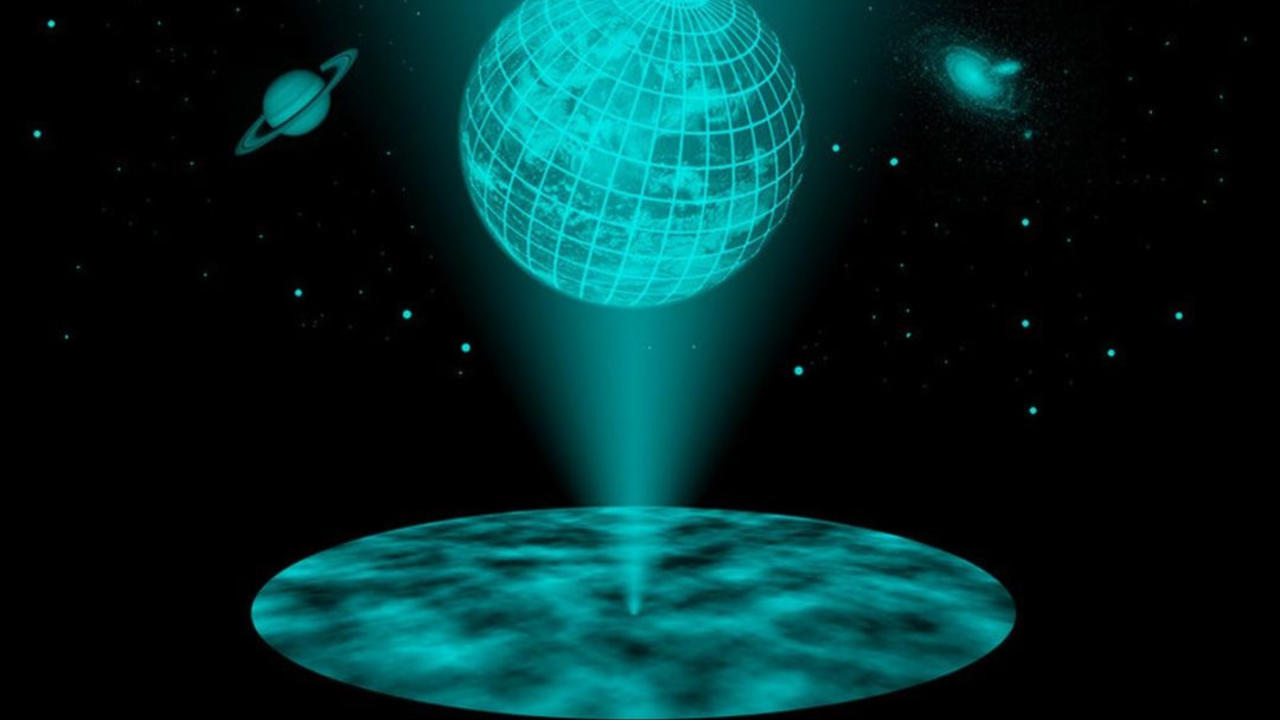Science News
& Faculty Articles
Fractal Pattern in a Quantum Material Confirmed for the First Time!

Image by: Arkadiusz Jadczyk
By Dr. Inés Urdaneta / Physicist at Resonance Science Foundation
The word fractal has become increasingly popular, although the concept started more than two centuries ago in the 17th century with prominent and prolific mathematician and philosopher Gottfried Wilhelm Leibnitz. Leibnitz is believed to have addressed for the first time the notion of recursive self-similarity, and it wasn’t until 1960 that the concept was formally stabilized both theoretically and practically, through the mathematical development and computerized visualizations by Benoit Mandelbrot, who settled on the name “fractal”.
Fractals are defined mainly by three characteristics:
- Self-similarity: identical or very similar shapes and forms at all scales.
- Iteration: a recursive relationship limited only by computer capacity. With sufficiently high performance, the iterations could be infinite. This allows for very detailed shapes at every scale, that modify...
Artificial Intelligence Meets Quantum Physics

By Dr. Inés Urdaneta / Physicist at Resonance Science Foundation
As many theoretical and computational chemists and physicists know, quantum chemical calculations involving more than an electron and nuclei are very difficult to solve. They belong to a field called many body problems and require an extensive amount of computational infrastructure and hours of calculations depending on the size (the number of particles) of the system.
Here is where artificial intelligence – a combination of artificial neural networks and machine learning – comes into play. Neural networks have been around for more than 50 years, and they are more actualized than ever before. This is because they can learn through something called backward propagation, reaching a high level of predictability and increasing accuracy by training the network.
Quantum theoretical models, together with their computational packages, have been outstandingly successful in describing the quantum regime. While...
Between the Generalized Holographic Model and Data Science

By Dr. Inés Urdaneta / Physicist at Resonance Science Foundation
A couple of months ago, I presented a talk at the Benemerita Universidad Autonoma de Puebla’s Physics Institute (IFUAP), the topic being the Generalized Holographic Theory developed by Nassim Haramein. The invitation was serendipity; Haramein’s Holographic model prediction of the proton muonic radius – within experimental precision – had just been confirmed by the latest electronic hydrogen measurements from Bezginov et al. 2019. These measurements also confirmed that the standard model is off by 4%, way below experimental certitude.
I wasn’t sure which frame would fit best as an introduction to the subject for the presentation. Should I start with black hole thermodynamics, or the holographic principle? Despite the pertinence of both these topics, neither quite captured the dimension of the concern I had. The unified model demonstrates scaling from the Planck – and even...
Sound has Mass and thus, Gravity?

By Dr. Inés Urdaneta / Physicist at Resonance Science Foundation
In order for sound to be affected by gravity and to exercise gravity, it has to carry some mass of its own. But our common observations showed that sound is vibration traveling through media; energy traveling through material carrying no mass of its own. Until now, intuitively we see that the mass, through which the sound wave or vibration is traveling, must affect the speed and propagation of the sound wave through that media. Sound waves travel at different speeds in different mediums — water, oil, wood. The displacement from an equilibrium position of mass (atoms in a material) is perceived as sound. Seems everything is understood, right? Well, here is where the piece that’s missing comes into play: the energy promoting the displacement of the atoms carries mass of its own! That’s what the results of the research presented below conclude.
Let’s see how… the atoms in a material...
The First Image of a Black Hole is Finally Here!

By Dr. Inés Urdaneta / Physicist at Resonance Science Foundation
For some time now we have been following the Event Horizon Telescope initiative (EHT) aiming at the obtention of the first image of the EH of a Black Hole (BH) for Sagittarius A (Sag. A*), located at the center of our own galaxy, the milky way. Given the fact that Sag. A* nuclei is much less active that Messier 87 (M87*), the image reported first is that of M87*. Even though M87* is 2000 times farther away, it is 2000 times more massive. This compensates exactly the distance, with a higher nuclei activity allowing a better resolution and faster data analysis than Sag. A*.
So finally, the day has come! The moment couldn't be more exciting. First EHT results for the shadow of the BH, which is 55 million light years away from Earth, with a mass 6.5 billion times the mass of our Sun and located at the center of M87*, have been announced worldwide today, April 10th 2019, at the same time by different press...
Does Information Carry Mass?

By Dr. Inés Urdaneta / Physicist at Resonance Science Foundation
If information carries mass, could it be the dark matter physicists are craving?
The existence of dark energy and dark matter was inferred in order to correctly predict the expansion of the universe and the rotational velocity of galaxies. In this view, dark energy could be the source of the centrifugal force expanding the universe (it is what accounts for the Hubble constant in the leading theories), while dark matter could be the centripetal force (an additional gravity source) necessary to stabilize galaxies and clusters of galaxies, since there isn’t enough ordinary mass to keep them together. Among other hypotheses, dark energy and dark matter are believed to be related to the vacuum fluctuations, and huge efforts have been devoted to detecting it. The fact that no evidence has yet been found calls for a change of perspective that could be due to information theory.
How could we measure the mass of...
Ancient Light Suggests Universe Could Loop Back on Itself!

Image: The cosmic microwave background as seen by the European Space Agency’s Planck satellite. Credit: ESA and the Planck Collaboration
By Dr. Inés Urdaneta / Physicist at Resonance Science Foundation
The photo above is quite common among astronomers and astrophysicists. It depicts what is known as the cosmic microwave background (CMB), the very ancient light coming from the beginnings of our universe. It is supposed to be the leftovers of the grand explosion birthing our Universe, called the Big Bang.
When analyzing the expansion of the universe, astrophysicists imagined that the expansion could be rewinded, just like a film, and that this backward movement would show the collapse into a singularity. Together with the astronomical observations of the CMB radiation, they concluded that the universe had to be flat. But recent observations with better precision are showing a different picture. An anomaly in data from the best-ever measurement of the CMB is offering...
Supermassive Black Holes Birthing Stars at “Furious Rate”!

By Dr. Inés Urdaneta / Physicist at Resonance Science Foundation
We have been increasingly hearing much more about black holes and their role in the cosmos.
Black holes are exotic creatures, mainly classified in two types according to their size: stellar black holes (up to tenths of solar masses) and supermassive black holes (billions of solar masses). We commonly used to believe that, independent of their size, black holes all share the same feature: they devour everything getting too close and entering their event horizon.
For decades, astronomers have looked for galaxy clusters containing rich nurseries of stars in their central galaxies. Instead, they found powerful, giant black holes bursting out energy through jets of high-energy particles. Extremely hot particles emanating from these black holes were found to be preventing the formation of stars. So where are all the stars coming from?
The leading theories have proposed two mechanism to elucidate this mystery. One...
Repulsive Casimir Effect!

Credit: Image courtesy of Alan Stonebraker, American Physical Society.
By Dr. Inés Urdaneta / Physicist at Resonance Science Foundation
In a series of articles, we have addressed the measurable macroscopic effect coming from the microscopic vacuum fluctuations. The Casimir effect has proven to not only attract fixed or moving plates of the same material located micrometers apart, but it also has a measurable impact in nanoparticles.
In former works, the Casimir effect had been held responsible for the forces and torsional effects measured. This time it surprises us with a measured and theoretically explained repulsive force.
Only attractive interactions had been measured so far, but according to theoretical predictions, the sign and hence direction of the force could change from attractive to repulsive depending on the material and configuration of the setup. This had been achieved experimentally in 2009 by Capasso et al., from Harvard University, by choosing a...
Black Gold Material Breakthrough!

Photo: Ethan Miller/Getty Images
By Dr. Inés Urdaneta / Physicist at Resonance Science Foundation
A team of researchers from India and Seoul has developed “black” gold that harvests sunlight and uses it to turn carbon dioxide (CO2) into useful chemicals and fuel.
One of the most amazing things about nanomaterials, concerns their design properties. It´s astonishing how in a nanoparticle of a particular element, the same atom disposed in different geometries from that of the bulk confers to the material a completely different behavior regarding chemical or physical properties (conductivity, resistance, melting point, etc) to that of the bulk material … it´s like we were dealing with a completely different element!
In the case of the new, and black, gold, by varying the inter-particle distance between gold nanoparticles through a cycle-by-cycle growth approach and optimizing the nucleation-growth step with dendritic fibrous nanosilica,...



